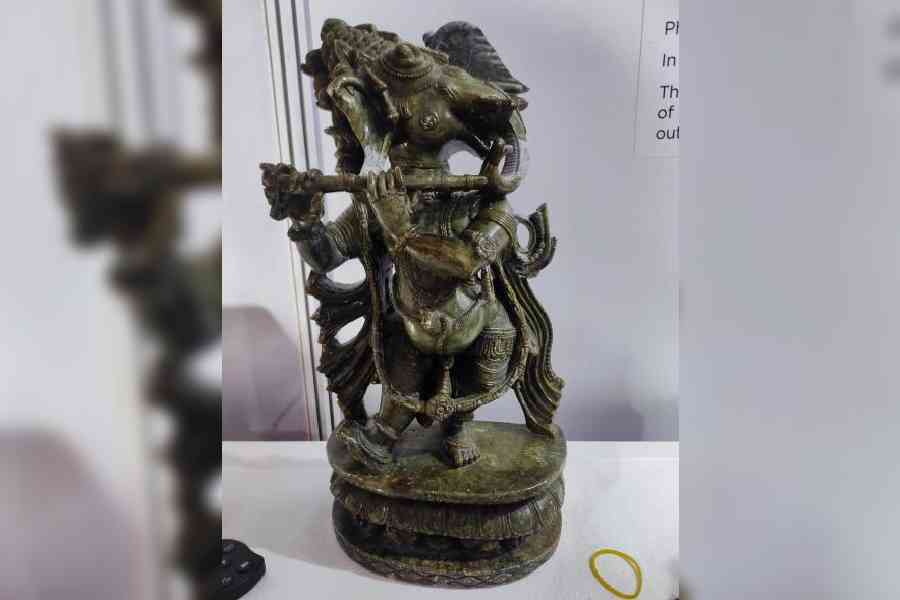The Museum Expo 2024 at Science City had brought together various partners, domain experts, and practitioners at what it called the “marketplace”, which showcased the prowess of various government and non-government institutions in making the museum a more attractive, knowledge-based, research-oriented learning space.
Indian Museum, in collaboration with IIT Kharagpur, showcased at its stall how Artificial Intelligence (AI) was used in digitally restoring damaged art objects. The two-day Expo organised by Science City ended last Sunday.
“We are first doing a three-dimensional (3D) scan of the damaged art object and then we collect data about it and about similar objects from similar sites of similar dates and try to recreate the damaged part. We make 3D prints of the object using material like resin that helps in very minute detail work. With the help of this 3D print we digitally restore the damaged artefact,” said a student of IIT involved with the project.
Similarly, IIT Kharagpur also uses Augmented Reality (AR) to create virtual museums in the Indian Museum. “Not all objects can be displayed. Often the objects are taken away for conservation. In such cases we can use AR to create the object digitally which can be viewed with the help of AR-enabled glasses,” he added.
Another Calcutta-based museum Kolkata Centre for Creativity showed its conservation efforts. KCC Conservation Lab was set up with a four-year grant from Tata Trust and now it is operating on its own, conserving paintings, sculptures and manuscripts.
At the marketplace, KCC Lab showcased how it documented, catalogued and conserved works of artist Lalit Mohan Sen (1898-1954). A greensoap stone Ganesha sculpture by Raghunath Mahapatra of Odisha has been restored by the lab with the help of a local temple maker’s family.
“The gentleman who helped us identify the material of the statue as green soapstone belonged to a family of temple-makers. He could easily identify the material because it was a local material of Odisha. He also told us how to restore it and at what time it should be restored because the material is highly porous,” said a lab representative.
The upcoming National Maritime Heritage Complex in Lothal, Gujarat, developed by the Ministry of Ports, Shipping and Waterways is spread over 30 acres and will hold a maritime museum among other things. The new museum has already committed to acquiring and displaying the last Chot boat of West Bengal, an indigenous boat type that is an endangered craft. A surviving boatmaker had been commissioned to make the Chot boat to document the boat-making process. The boat is now languishing in Howrah.
“We have asked Kolkata Port Trust to transport the boat to Lothal. The port will acquire the boat soon,” said the curator of the museum.
SLOT, a Delhi-based illumination company specialising in museum illumination, also had a stall at the marketplace. DAG, a leading art company, engaged SLOT to illuminate the Ghare Baire exhibition at the Old Currency Building. It has also worked in the Red Fort Museum and other prestigious projects.
“We are doing a museum on coal in New Delhi that will be announced after the elections,” said a representative.
The expo also had a display of astrophotography by Ajay Talwar that showed photographs of celestial moments in great clarity. The accompanying captions in QR codes remained inaccessible because of poor connectivity at the site.










